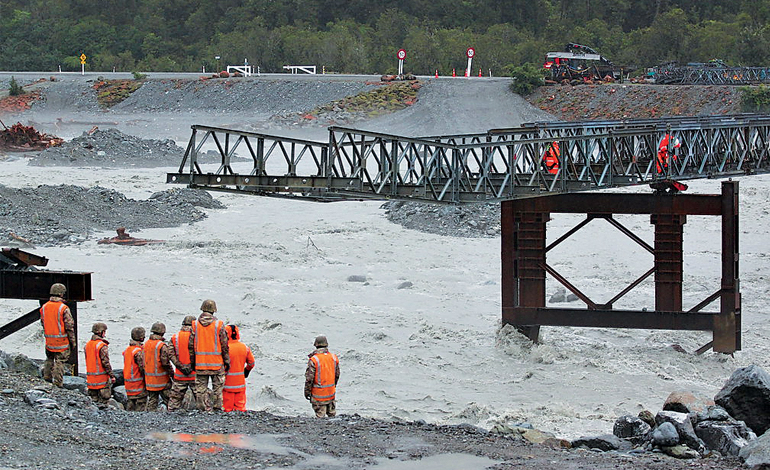Regional councils, property owners and insurers remain stuck in limbo over how best to document and respond to data on our country’s most high-risk flood areas. Ruth Le Pla spoke with Landcare’s Patrick Walsh about the problems of gathering and sharing comparable flood risk data and making sure any final insurance scheme is fair to all.

When it comes to flood management there are no easy answers. The authority to manage flood risk is currently delegated to regional councils. But they are not obliged to publish flood risk data for property owners or insurers. Landcare senior economist and capability leader Patrick Walsh says some, but not all, regional councils provide data online detailing flood plains or other hazards. He tips Auckland as one of the better councils for sharing such data.
Yet, even when councils release flood data online, there is a high degree of variation in how they report the information.
“If you go on Auckland’s website and see a flood hazard layer, it might be a one-in-500-year flood risk layer. In other places, there could be a one-in-100-year risk of flood layer. So, it’s hard to compare across regional councils.”
Patrick was speaking with NZ Local Government Magazine at the recent Conferenz Urban Futures New Zealand Conference in Auckland. He had just presented a snapshot of his work to date in a paper titled Deep South Challenge: Flood management in rural areas – the location and effectiveness of flood schemes. He says he hopes to release the full paper around June this year.
Patrick says full and consistent data would be helpful for environmental Crown Research Institutes in helping prepare for any sea level rise.
It would also help regional councils compare their policies with each other’s and prove useful for think-tanks trying to see what the best overall policies might be.
Importantly, it would also help people make informed decisions about flood risks to any given property. In some places, the current system means anyone looking to invest in a property might have to pay for a separate LIM for each property they want to evaluate for flood risk. This can add up to considerable costs.
In the US, the Army Corps of Engineers releases nationwide flood plain data. So, people can very clearly see if their property is in a flood plain or not. This information dovetails with subsidised flood insurance programmes and means that people with a property in a flood plain will have to pay extra for their insurance.
“There is a general trend in New Zealand to be moving in that direction whereby you will be paying more for insurance in the future if you live in a flood plain,” says Patrick. Wellington-based economic and public policy institute Motu is currently researching the issue.
Patrick says cost considerations currently prevent some regional authorities from collating and publishing flood risk data online. “It’s expensive.” Relevant data may need to be collated from a wide range of sources: everything from satellite imagery to oral histories of floods. Councils often need to pay consultants to map out and put such data into searchable files that can be shared online. And some regional councils are less well equipped than others to analyse whether a specific area may be a one-in-100 or a one-in-500-year flood risk or otherwise.
“There are also potential legal reasons why they might not want to do that,” says Patrick. “If someone moves into a house where the regional council has said there’s no flood risk and they are getting flooded every few years, the council could be liable.”
According to Patrick, many people think the issue should be a central government responsibility. “Some regional councils are waiting to see. The Ministry for the Environment has been saying they’re going to release more structured policy on this. Some regional councils are waiting for more working groups to get together to try to motivate this. That want to know what an agreed definition might be. So, there are potentially things in the works but nothing concrete so far.”
Meanwhile, our country remains out of step with insurance practices in many other parts of the world where people living in an area characterised by higher flood risk pay correspondingly more for their insurance.
“Look at Auckland,” says Patrick. “In places that are right on the waterfront, there are a lot more high-value homes and these are in more high-risk areas. So, right now we’re basically subsidising higher-income people to move into these coastal homes and then when they get flooded, the rest of us are paying for it.”
Conversely, there are greater numbers of lower-income people living in some of our country’s less desirable, lower-lying, more damp and flood-prone inland areas.
“There is this equity concern,” says Patrick, who notes that people on lower incomes might not be able to afford extra premiums for living in these flood-prone places.
“If we were to move to a new regime where people were paying for flood insurance there would have to be some sort of graduated way to accommodate that.”
Patrick says one of the main, but “very preliminary”, results of his paper is that in mesh blocks with flood schemes, which are where a targeted rate is used to help finance flood infrastructure, Earthquake Commission (EQC) claims are tens of thousands of dollars below claims in other areas.
“The exact figure is still a little bit up in the air – we are working on our models – but we find a negative and significant effect of flood schemes on EQC claims. And since EQC claims are only a small proportion of total private insurance claims, we find these flood schemes do have a significant effect.”
This article was first published in the May 2019 issue of NZ Local Government Magazine.



